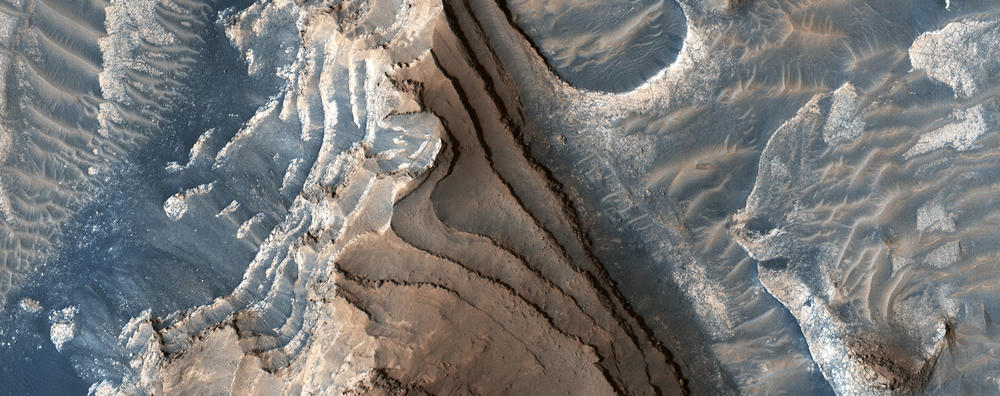I work with multiple monitors in different resolutions. I also organize projects using a handful of desktop workspaces (for example, in Windows). Distinctive wallpapers can contribute to a valuable sense of place when you do all your work in the same real location, but it can be hard to find a large enough set that’s beautiful, diverse, high-resolution, and suitable for ultrawide, 4K, or portrait-mode monitors.
One nice option is to use generative art: trianglify.io is minimalist and seems popular. vexorian’s Cloudy Conway is a personal favorite. (We’re all used to free wallpapers, but it’s worth paying artists.)
My current setup uses images from High Resolution Imaging Science Experiment (HiRISE). I select and download images by hand, but I credit Martin O’Leary’s HiRISE Twitter bot for inspiration.
HiRISE
HiRISE has been taking pictures of the surface of Mars from the Mars Reconnaissance Orbiter since 2006. It’s really a wonder—the most powerful camera we’ve sent beyond Earth (as of 2021, as far as I know), able to resolve terrain features a few tens of centimeters across.a a The entire planned MRO mission cost less than US$1 billion to develop and operate, and the orbiter continues to operate more than a decade beyond the mission lifetime, both with its own science instruments and as a relay for ground missions. I mention cost because, as with most unmanned space missions, it seems to me very little to ask for some of technological civilization’s most astounding successes. ⏎
Raw and processed data are available in the online catalog. Once a month or so, a few images are singled out for longer captions and are prepared in a range of wallpaper resolutions—for example, this crater with layered bedrock, which was requested as an imaging subject by a member of the public.

You could certainly fill up on those selections, but the rest of the monthly batch can be just as interesting. And the result feels more personal if you go through them yourself. I use the HiRISE team’s .JP2 viewer HiView to explore images in (usually) either RGB or IRB (infrared-red-blue; more about color), following their quick start guide to select a region and save it unscaled.
What else?
If you have a favorite way to create a virtual sense of place, I’d love to hear it. You can find me on twitter.